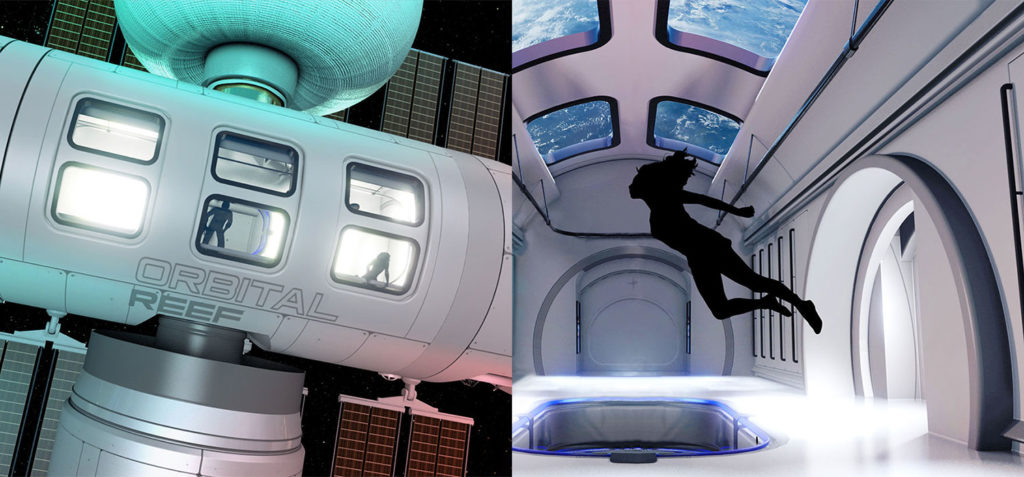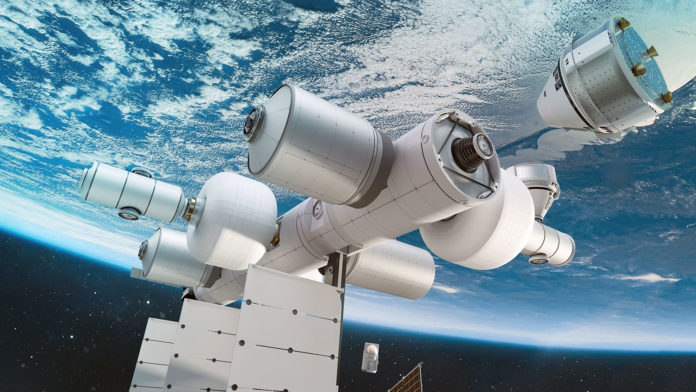Blue Origin has revealed plans for Orbital Reef, a commercially developed, owned, and operated space station to be built in low Earth orbit. The station will start operating in the second half of this decade and will offer trips in orbit to tourists and scientists.
Jeff Bezos’ space company has been joined by companies in the sector that will contribute their technologies, such as Boeing, Sierra Space, Redwire Space, Genesis Engineering Solutions, as well as a consortium of scientists led by Arizona State University.
Orbital Reef will be operated as a “mixed-use business park” in space, as it will be open to a wide variety of international customers. It features a human-centered space architecture with world-class service and amenities that is inspiring, practical, and safe. The station will be used for research, manufacturing, tourism, education, and other tasks.
In addition, the reusable space transportation and smart design, accompanied by advanced automation and logistics, will minimize cost and complexity for both traditional space operators and new arrivals, allowing the widest range of users to pursue their goals. The open system architecture allows any customer or nation to link up and scale to support demand. Module berths, vehicle ports, utilities, and amenities all increase as the market grows.

The specifications of the Orbital Reef ion haven’t been released, which is understandable at this early stage. However, the basics of the program have been outlined. The space station will consist of several modules and can accommodate up to 10 people. Blue Origin will build utility systems, large-diameter core modules, and reusable heavy-lift New Glenn launch system. Sierra Space will provide a Large Integrated Flexible Environment (LIFE) module, a node module, and a runway-landing Dream Chaser spaceplane for crew and cargo transportation, capable of landing on runways worldwide.
Boeing will build a science module and handle station operations and maintenance engineering, while its Starliner crew spacecraft will also visit the station. Redwire Space will handle microgravity research, development, and cargo operations, while Genesis Engineering Solutions will provide a Single Person Spacecraft for outside work and space tourist excursions without the need for a spacesuit. Finally, Arizona State University will lead a consortium of universities that will manage the research advisory services and public outreach.
Earlier this year, NASA announced the Commercial Low Earth Orbit (LEO) Development program with the goal of providing capital to space flight companies to drive the development of private space stations in low Earth orbit. Although NASA would like to extend the life of the International Space Station until at least 2028, sooner or later, it will “retire.” This will begin the era of commercial space stations (built by private companies and not funded by governments).
Meanwhile, Blue Origin is working on the New Shepard system, with a suborbital rocket designed to take space tourists to the frontier of space.
“For over sixty years, NASA and other space agencies have developed orbital space flight and space habitation, setting us up for commercial business to take off in this decade,” said Brent Sherwood, Senior Vice President of Advanced Development Programs for Blue Origin. “We will expand access, lower the cost, and provide all the services and amenities needed to normalize space flight. A vibrant business ecosystem will grow in low Earth orbit, generating new discoveries, new products, new entertainments, and global awareness.”
